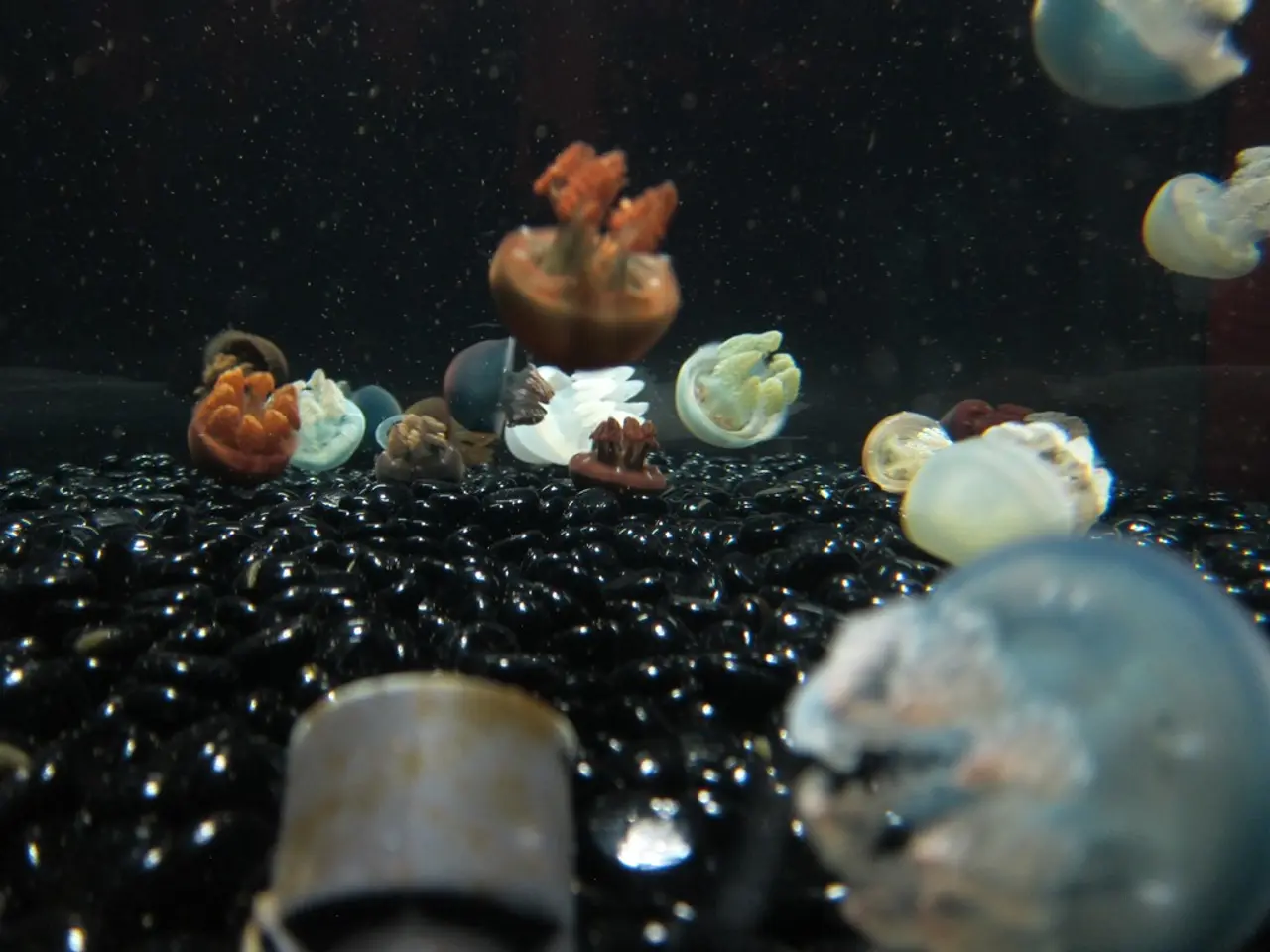Summer Heat Linked to heightened Vibriosis risk - Rising threat from Vibrio in the summer heat
The European Centre for Disease Prevention and Control (ECDC) has launched an interactive map, the "Vibrio Map Viewer," to monitor the presence of vibrio bacteria in the North and Baltic Seas. This move comes as health authorities report an increasing number of vibrio infections along these coastlines, particularly during the summer months.
In 2021, the Robert Koch Institute (RKI) recorded 42 cases of locally contracted non-cholera vibrio infections. As of July 7, 2022, at least two new cases have been reported. However, precise numbers for this year are currently unavailable.
The rise in vibrio cases is linked to the warmer water temperatures that provide optimal conditions for these bacteria to multiply rapidly in surface waters. The Baltic Sea, which is already an ideal habitat for vibrios due to its low salt content, is one of the fastest warming marine ecosystems worldwide.
Infections with non-cholera vibrios can lead to rapidly progressing wound infections and, in rare cases, blood poisoning (sepsis). Wound infections with the species Vibrio vulnificus are particularly dangerous, as they can cause extensive tissue damage within a very short time.
Those with open wounds or weakened immune systems are at a higher risk of vibrio infections. An increase in salt concentration in shallow bathing waters due to increased evaporation could offer optimal living conditions for vibrios.
While the EU Bathing Water Directive does not currently require testing for vibrios, some federal states with bathing waters known for the presence of vibrios already investigate contamination during the summer months.
Since 2020, there has been a mandatory reporting requirement in Germany for infections with non-cholera vibrios. In Germany, Vibrio cholerae, the cause of cholera, mainly affects returning travelers, but cases have been reported due to imported, contaminated spring water.
Given the lack of precise numbers from 2022 found in the search results, it is recommended to consult Germany’s Robert Koch Institute (RKI) or the European Centre for Disease Prevention and Control (ECDC) for the most recent and exact epidemiological data on vibriosis cases by region.
In conclusion, the risk of vibrio proliferation is increasing due to climate change and warmer water temperatures. It is crucial for bathers to be aware of the potential risks and take necessary precautions, such as avoiding water with visible signs of contamination and seeking immediate medical attention if any wounds come into contact with seawater.
- The Community policy should address the increasing occurrence of vibrio infections in the North and Baltic Seas.
- Employment policy should prioritize workplace-wellness initiatives, including educating employees about medical-conditions related to chronic diseases like cancer and respiratory conditions.
- In the context of rising vibrio cases, digital health monitoring tools can be an effective employment policy strategy for industries with workers who frequently come into contact with seawater.
- Workplaces need to accommodate employees with digestive health issues and eye-health concerns, as they may be more susceptible to vibrio infections.
- Hearing protection should be provided to workers in industries dealing with sea-related tasks, as they might end up working in contaminated water.
- Health-and-wellness programs should include fitness-and-exercise routines focused on building immunity to autoimmune disorders, as these disorders could increase the risk of vibrio infections.
- Climate-change policies should prioritize cooling strategies for the Baltic Sea, as the region is one of the fastest warming marine ecosystems worldwide, encouraging vibrio growth.
- Regulations in the manufacturing sector should consider the impact of vibrio bacteria on their products, particularly seafood.
- Mental-health programs should address the anxiety surrounding vibrio infections, as the fear of contracting these bacteria may exacerbate existing mental health conditions.
- Skin-care products should be developed to help protect against vibrio infections, as skin-care is an important aspect of overall health and wellness.
- Therapies-and-treatments for vibrio infections should be researched and made readily available.
- Nutrition guidelines should be developed to help promote a healthy diet that supports cardiovascular health, which can help the body resist vibrio infections.
- The industry should prioritize organizing educational campaigns about the importance of personal hygiene and protecting open wounds from vibrio bacteria.
- Medicare policies should cover the costs of diagnosing and treating vibrio infections, ensuring that all citizens have access to necessary medical care.
- Neurological disorders can increase the susceptibility to vibrio infections; thus, advancing research in this field is essential.
- Environmental-science programs should focus on understanding the impact of climate change on vibrio bacteria populations.
- Finance policies can play a role in funding research and development for preventing and treating vibrio infections.
- Energy policies should also consider the effects on marine ecosystems, as changes in water temperatures can influence vibrio bacterial growth.
- Skin-conditions like eczema or cuts could increase the risk of vibrio infections, making it crucial to take extra precautions when swimming.
- Retail establishments, particularly those selling seafood products, should ensure that their items are properly treated to minimize the presence of vibrio bacteria.
- Transportation policies should consider the potential risks associated with travel to regions known for high levels of vibrio contamination.
- Cybersecurity measures should be strengthened to protect the data collected by the Vibrio Map Viewer from unauthorized access.
- Lifestyle changes, such as maintaining a healthy diet and exercise routine, can strengthen the immune system and reduce the risk of vibrio infections.
- Fashion-and-beauty companies should create products that protect the skin while swimming, meeting the demand for health-conscious products in an increasingly aware community.
- Food-and-drink industries should be held accountable for preventing the contamination of their products with vibrio bacteria.
- Investing in companies specializing in therapies-and-treatments for vibrio infections can be a socially responsible investment choice.
- Wealth-management strategies should prioritize financial stability to ensure accessibility to healthcare resources in case of a vibrio infection.
- Home-and-garden guides should provide advice on how to create natural, non-toxic solutions for cleaning wounds, reducing the risk of vibrio infections.





